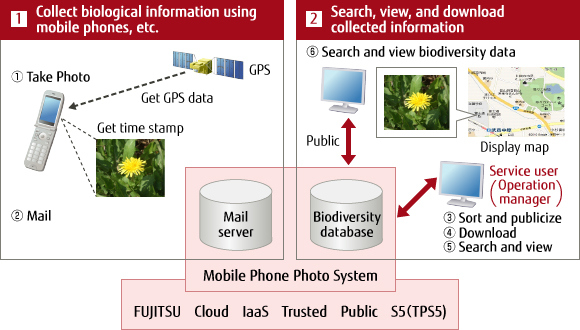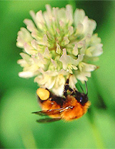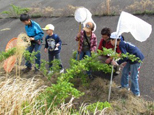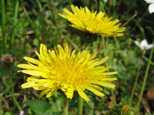Archived content
NOTE: this is an archived page and the content is likely to be out of date.
Investigation Project Using Mobile Photo System and Cloud Services
※Provision of Mobile Photo System and Cloud Services ended.
Thank you for your cooperation.
Investigation of Wild Animals and Plants Is Difficult!?
For the purpose of conserving biodiversity, various entities including municipalities, universities, research institutions, NPOs and companies are conducting research activities in various regions to investigate the habitat and growth conditions of wild animals and plants. While there are various investigation methods available such as remote sensing and fixed point observation, the method to conduct field surveys on foot tended to require considerable man-hours and high costs to secure enough investigators and enough area of investigation covered.
Realizing Citizen-Participation-Type Investigation by Using Mobile Phones and Smart Phones
The mobile photo system is a system that stores photo images sent via emails from mobile phones and smart phones with a GPS function into a database. Obtained data can be viewed through the Internet as map information. By people taking and posting pictures of animals and plants, the mobile photo system realizes a citizen-participation-type investigation system that collects and manages a large amount of biodiversity data.

As the mobile photo system uses smart phones and mobile phones that are part of the social infrastructure, it has the following advantages:
- Citizens, students, and organization members can become investigators, securing a large number of investigators.
- A large amount of data can be collected for a wide area.
- Simultaneous investigation in multiple areas is possible.
- Participation by various people leads to conservation of the local ecosystem and increased public awareness.
As part of our CSR activities, we assist promotion of biodiversity conservation by providing a mobile photo system and cloud services to relevant research projects.
![]()
National Census of Bumblebees, Who Are in Charge of Flower Pollinating Services
Prof. Masakado Kawata, Graduate School of Life Sciences, Tohoku University

As of FY2013, we have received more than 1,300 pictures of bumblebees submitted from all over Japan. By applying a method called a niche model to the obtained data, we have estimated the habitat distribution for several species. It was especially truly informative to be able to narrow down potential environmental factors, etc., that affect the inhabitation of Bombus ardens, Bombus sapporensis, Bombus diversus, and so on.
![]()
TCE Animal and Plant Species Habitat Distribution Survey
Masaaki Kohmaru, President, Tokyo College of Environment

We have used this service in our practice sessions for the past year. As a result, we could upload about 2,600 items of reliable data, mainly taken by our students. It seems our students have become skilled in handling the system through the project. For FY2014, we are planning to concentrate on collecting information of our target species.
Information on Investigations Conducted by Organizations Using the Services
Information of investigations conducted by the organizations is available here.

National Census of Bumblebees
Bumblebees are the main pollinator for various crops such as tomatoes and eggplants. It is reported that the habitation of Bombus terrestris, a species not native to Japan, is affecting the habitat of species native to Japan. Habitat information of bumblebees is critically important in conserving bumblebees native to Japan.

Let's Find the Creatures of Kurashiki!
Kurashiki City is promoting a "Regional biodiversity strategy", a project for saving the living of citizens and the future of the nature. Data about creatures residing in Kurashiki City are precious pieces of information for understanding the current condition of the natural environment.

National Dandelion Survey
Are dandelions all yellow? Well, not really. White dandelions also exist. Do dandelions all bloom in spring? Well, not really. Some dandelions that are not native to Japan bloom all year round except on very cold winter days.